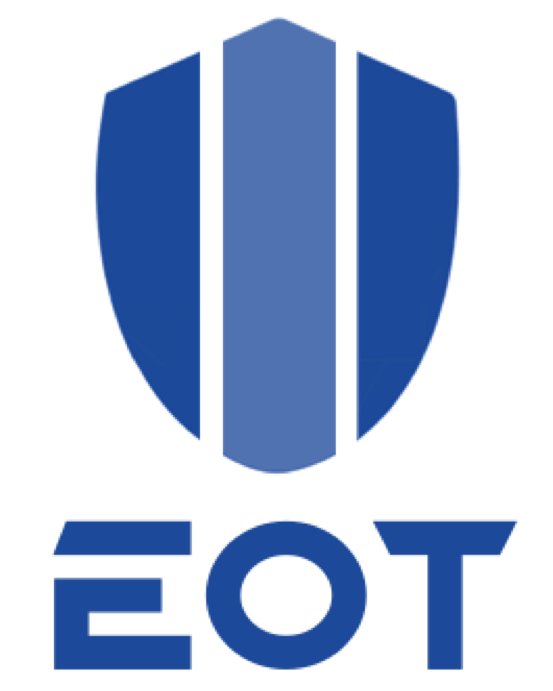- marketing admin
- Articles
Digital Transformation is a long journey for manufacturing, mining, and energy industries and has to deal with tons of problems that come along with the way of digitisation of industries. The influence of digital transformation is widespread among industries and often is regarded as the future of industrial production. This journey of moving historical and stream data involves an enormous amount of effort to read/write records that are vast and diverse in nature. There is no one solution for all the data needs of the industries and it is industry specific while crafting solutions to challenges faced in the journey of digital transformation.
What makes an OT/IT network?
In the industrial digital transformation, there are two parts of technology that work together synchronously in-order to keep the industrial systems functioning all the time. One is the Operational Technology (OT) and the other one is the Information Technology (IT). The classification of these two technology parts is based on the layer of network to which they belong and the isolation layer to bridge these two networks. A quick overview on what these two systems are made of can be summarized as,
OT – it starts from the network physical layer and spans upto the layer 3 of the industrial network
IT – it starts from the layer 3b, otherwise called the Demilitarised Zone (DMZ) and spans upto the application layer
The effective integration of these absolute systems has been a challenge for years and is still a burning problem pushing technology enthusiasts towards finding an efficient solution.
Challenges of OT/IT convergence
Since the inception of the industrial revolution, industrial units are collecting volumes of data from various industrial systems to better understand and plan the production activities in a deterministic manner. However, due to the limitations of the IT infrastructure and OT network devices, there is a chasm when it comes to bridging the gaps between the two parts of the network.
Moving data from one network to the other was never easier and it involved a closed network environment to make data secure from external threats. The data fed from OT systems are so sensitive and impactful, that it needed a masking layer to avoid any third party attacks into the OT network. If any of the OT networks are compromised, it might lead to an undesirable work environment.
The current trends in OT/IT convergence space focus on an average of 6 factors that greatly influence the implementation of OT/IT convergence.
Here are the 6 factors that impacts OT/IT convergence,
- Leadership commitment – 65 % more likely to achieve
- Purpose – identify the problem statement and craft and effective implementation plan
- Consistent messaging and timely monitoring of milestones
- Rethinking and working on how to make the transformation exciting
- Compassion and care so as to practical and emotional support
- Prepare for an Agile planning and deployment with an open mind, persistent and result oriented mindset
Failures of OT/IT convergence
The digital transformation has been a tradition activity from the last 30 years and is yet an evolving technology which is getting better into reliable technology solutions. The advancement in the information technology (IT) and networking of devices (IoT) has rapidly increased the pace of digital transformation. They are the prime catalyst for accelerating the pace of digital transformation.
However, there is no success without failing in any revolutionary technology shift, especially for technologies that are designed for large scale industries. In the history of digital transformation, the manufacturing, oil and gas, and energy industries have seen numerous pitfalls in the journey of digital transformation creating a checklist of challenges worth considering inorder to successfully transform from traditional to digital industries.
Let’s look at some of the failures of Fortune 500 companies in an attempt towards digital transformation and the factors contributing to the failures.
GE Digital - A downturn
The idea of venturing into the digital business came into focus for GE in early 2013 and since then GE backed GE Digital is at the forefront of developing digital solutions for Industry 4.0 transformation. But, in the early days of GE Digital it was claimed to have generated more than $1 billion in revenue and was seen as a success in the Digital Transformation market space. (Baumann, 2021)
GE Digital came up with a “GE Predictive Solutions” product, code named Predix, to help industry personnel optimize the performance of its operations and assets under management. (Baumann, 2021)
In 2015, GE Digital added new leadership teams across different verticals and was rapidly expanding its operations. This led to digitalization of foundries helping GE customers achieve digital transformation targets. (Morgan, 2019)
Catalyst for failures
The rapid expansion of GE Digital business created a separate division rather than embracing all digital solutions into a single vertical upfront. This horizontal expansion of operations, led to a great shift in workplace cultural changes, and demanded a broader spectrum of skill sets working across time zones. It added to the overhead of recruitment and compensation packages for the resources.
The lack of focus on the quality of GE Digital solutions and the slowing growth of its business under the leadership of Mr. Flannery, reduced the pace of growth prospects. It impacted the revenue streams leading to a change in the leadership midway of the transformation journey. However, the falling stock value and market decisions also played a key role in the failure of GE digital transformation business. In 2019, under the new leadership of Culp. GE Digital then became a separate enterprise wholly owned by GE and developed solutions for non-GE customers as well. (Girod & Duke, n.d.)
Embracing OT/IT Challenges
The lessons learned from the failure of giant companies in bringing a revolutionary technology shift in the manufacturing industry, has helped the upcoming IIoT solutions to cope up with the demands in the evolving industrial digital transformation space.
Any digital transformation project can focus on these few pointers at the early stages of the transformation project. This helps identify quantifiable ways to achieve business improvements within a set timeframe and provide ample space for testing it for developing the plan into a fail-safe business model.
Here are some of the key pointer to look into, based on the scale and type of industry where digital transformation solutions are in great demand (Baumann, 2021),
- Identify ways to practice lean management that reduce operation costs
- Proactively look out for generating revenue streams
- Craft business specific unique business models
For large scale companies like GE, digital transformation is so challenging in a short period of time and it becomes overwhelming. The key to manage this situation is to identify and keep small manageable goals for transformation projects and then build an operation plan to identify areas to focus the transformation efforts in the right order.
The failure of GE digital is evident from the fact that it lacked a clear vision from the beginning. It failed to delegate digital transformation efforts across GE business units and instead rolled out the transformation to all its business units at once.
However, GE managed to bounce back and get traction in the digital transformation journey making GE Digital from a building failing solutions to becoming the world leader in providing energy solutions and as a global powerhouse running machines in aviation, marine, automobile, and renewable energy sectors.



